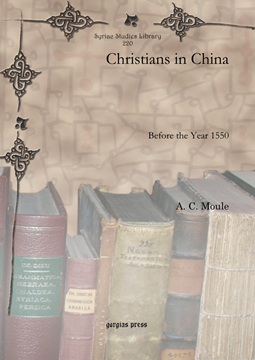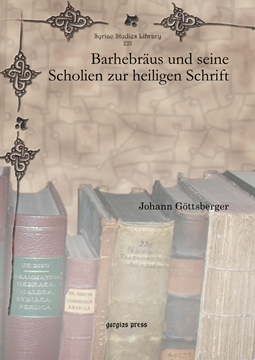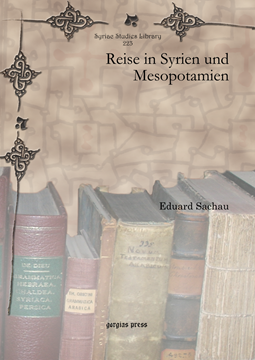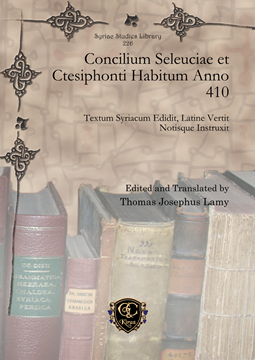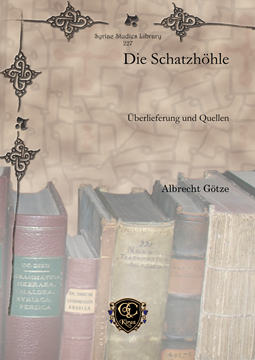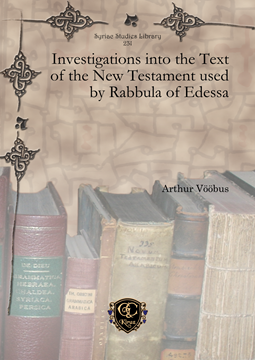The Religions of Modern Syria and Palestine
Series: Syriac Studies Library 219
ISBN: 978-1-61143-604-4
This volume represents the Bross Lectures given by Frederick J. Bliss in 1908 in which he describes the religious practices of Christians and Muslims in Syria and Palestine.
$175.00 (USD) $105.00 (USD)
Christians in China
Before the Year 1550
By A. C. Moule
Series: Syriac Studies Library 220
ISBN: 978-1-61143-605-1
A. C. Moule presents here a survey of the sources for Christianity in China prior to 1550 in order to construct a history of Christianity in China prior to the modern missions of the sixteenth century.
$170.00 (USD) $102.00 (USD)
Barhebräus und seine Scholien zur heiligen Schrift
Series: Syriac Studies Library 221
ISBN: 978-1-61143-606-8
Johann Göttsberger presents a detailed study of Gregory Bar Hebraeus’s Commentary on the whole Bible with special attention to the biblical version(s) that Bar Hebraeus uses for his citations.
$133.00 (USD) $79.80 (USD)
Le Christianisme des Arabes Nomades sur le Limes
et dans le Désert Syro-Mésopotamien aux Alentours de L'Hégire
Series: Syriac Studies Library 222
ISBN: 978-1-61143-607-5
P. Henri Charles discusses the various forms of interaction between Christians and Arab nomads in the sixth and early seventh-century that led to the rise of a unique expression of Christianity among the nomad tribes.
$155.00 (USD) $93.00 (USD)
Reise in Syrien und Mesopotamien
Series: Syriac Studies Library 223
ISBN: 978-1-61143-608-2
The present volume is the travelogue of Eduard Sachau, who visited various sites throughout the Middle East in 1879-80. Sachau focuses primarily on issues pertaining to topography and geography.
$214.00 (USD) $128.40 (USD)
Joannes Bischof von Ephesos
der erste syrische Kirchenhistoriker
Series: Syriac Studies Library 224
ISBN: 978-1-61143-609-9
J. P. N. Land provides here an introduction to John of Edessa, an early leader of the non-Chalcedonian, miaphysite Christian tradition and the first church historian of the Syriac tradition.
$138.00 (USD) $82.80 (USD)
Concilium Seleuciae et Ctesiphonti Habitum Anno 410
Textum Syriacum Edidit, Latine Vertit Notisque Instruxit
Edited and Translated by Thomas Josephus Lamy
Series: Syriac Studies Library 226
ISBN: 978-1-61143-611-2
T. J. Lamy publishes here the Syriac text of the canons of the Synod of Mar Isaac that met in Seleucia-Ctesiphon in 410 CE at which the Syriac bishops officially accepted the canons of the Council of Nicaea.
$144.00 (USD) $86.40 (USD)
Die Schatzhöhle
Überlieferung und Quellen
Series: Syriac Studies Library 227
ISBN: 978-1-61143-612-9
Albrecht Götze presents here a study of the transmission history of the text known as the “Cave of Treasures” and the sources used in its compilation.
$149.00 (USD) $89.40 (USD)
Einiges über die karitative Tätigkeit des syrischen Mönchtums
Ein Beitrag zur Geschichte der Liebestätigkeit im Orient
Series: Syriac Studies Library 229
ISBN: 978-1-61143-614-3
Arthur Vööbus presents here a study of charitable giving among the monks of the Syriac tradition and compares these practices with the monks of the Western tradition.
$136.00 (USD) $81.60 (USD)
Investigations into the Text of the New Testament used by Rabbula of Edessa
Series: Syriac Studies Library 231
ISBN: 978-1-61143-616-7
Relying on a comparison of Scripture citations in Rabbula’s translation of Cyril with the corresponding texts in the Syriac Peshitta, Arthur Vööbus argues that Rabbula of Edessa was not responsible for the creation of the Peshitta.
$139.00 (USD) $83.40 (USD)

